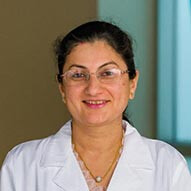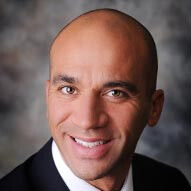Pediatric acute lung injury
An acute lung injury causes lung inflammation (swelling), which prevents oxygen from circulating in the body. Acute lung injury is a critical condition that requires constant oversight by a team of specially-trained caregivers. The critical care physicians at Children's Health℠ are international leaders in pediatric critical care.
What is a pediatric acute lung injury?
Acute (sudden and severe) lung injuries can result from distress to the chest or lungs or an infection. The injury will decrease the amount of oxygen reaching the body’s vital organs. As a result, the patient will suffer respiratory distress and will most likely need a ventilator to help them breathe.
What are the signs and symptoms of pediatric acute lung injury?
Chest pain
Confusion
Difficulty breathing
Excessive carbon dioxide in the blood
Fatigue
Fever
Fluid buildup in lungs
Low concentration of oxygen in the blood
Rapid breathing
How is a pediatric acute lung injury diagnosed?
Your child’s doctor may use a combination of these tests:
History and physical exam
Blood tests
Chest X-ray
Computerized tomography (CT) scan: a noninvasive test that uses X-rays to create cross-sectional pictures of the body
Electrocardiogram (EKG): a noninvasive test that records the heart's electrical activity
Echocardiogram: a noninvasive test that uses sound waves to create a moving picture of the heart
Sputum culture: a test of secretions from the lungs
What are the causes of a pediatric acute lung injury?
Acute (sudden and severe) lung injuries occur due to direct or indirect causes:
Direct cause — such as a trauma to the chest that puts the body in shock or breathing in smoke (inhalation)
Indirect cause — such as a severe infection or complications from pneumonia
How is a pediatric acute lung injury treated?
At Children's Health, the critical care physicians are international leaders in pediatric critical care. They work closely with nurses, respiratory therapists and other team members to make sure that your child gets whatever is needed at a moment's notice.
Standard acute lung injury treatments.
Your child’s doctor may use a combination of these treatment methods:
Medications to treat infection, relieve pain, and prevent blood clots
Oxygen therapy to increase the amount of oxygen in the bloodstream
Mechanical ventilation to help with breathing
IV fluids to improve blood flow and provide nutrition
Advanced acute lung injury treatments
The critical care team is prepared to treat children with any critical care diagnosis or crisis, including acute lung injury. At Children’s Health, we provide patient-centered care, which means we put your child’s interests at the forefront. We have multiple resources that are designed to not only meet the needs of your child, but also your entire family.
Some of those resources include:
Immediate family is welcome 24 hours a day and we even provide sleeping accommodations, though they are limited.
Research
Although our main focus has always been high-quality patient care, many of our medical staff members also conduct research into new treatment methods and technologies. This allows Children’s Health to have access to new therapies years before they are available at other institutions.
Leaders in critical care
Our medical staff also wrote one of the major textbooks in the field of pediatric critical care, which helped define how pediatric critical care is provided nationally.
Pediatric acute lung injury doctors and providers
 Cindy Bowens, MDCritical Care Specialist
Cindy Bowens, MDCritical Care Specialist Archana Dhar, MDCritical Care Specialist
Archana Dhar, MDCritical Care Specialist Peter Luckett, MDPediatric Pulmonologist
Peter Luckett, MDPediatric Pulmonologist Darryl Miles, MDCritical Care Specialist
Darryl Miles, MDCritical Care Specialist Maeve Sheehan, MDCritical Care Specialist
Maeve Sheehan, MDCritical Care Specialist Loren Glasser, MDPediatric Pulmonologist
Loren Glasser, MDPediatric Pulmonologist